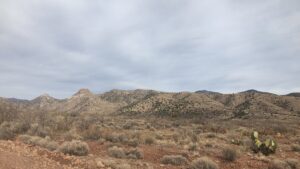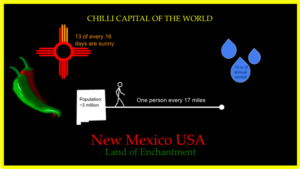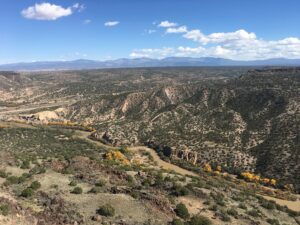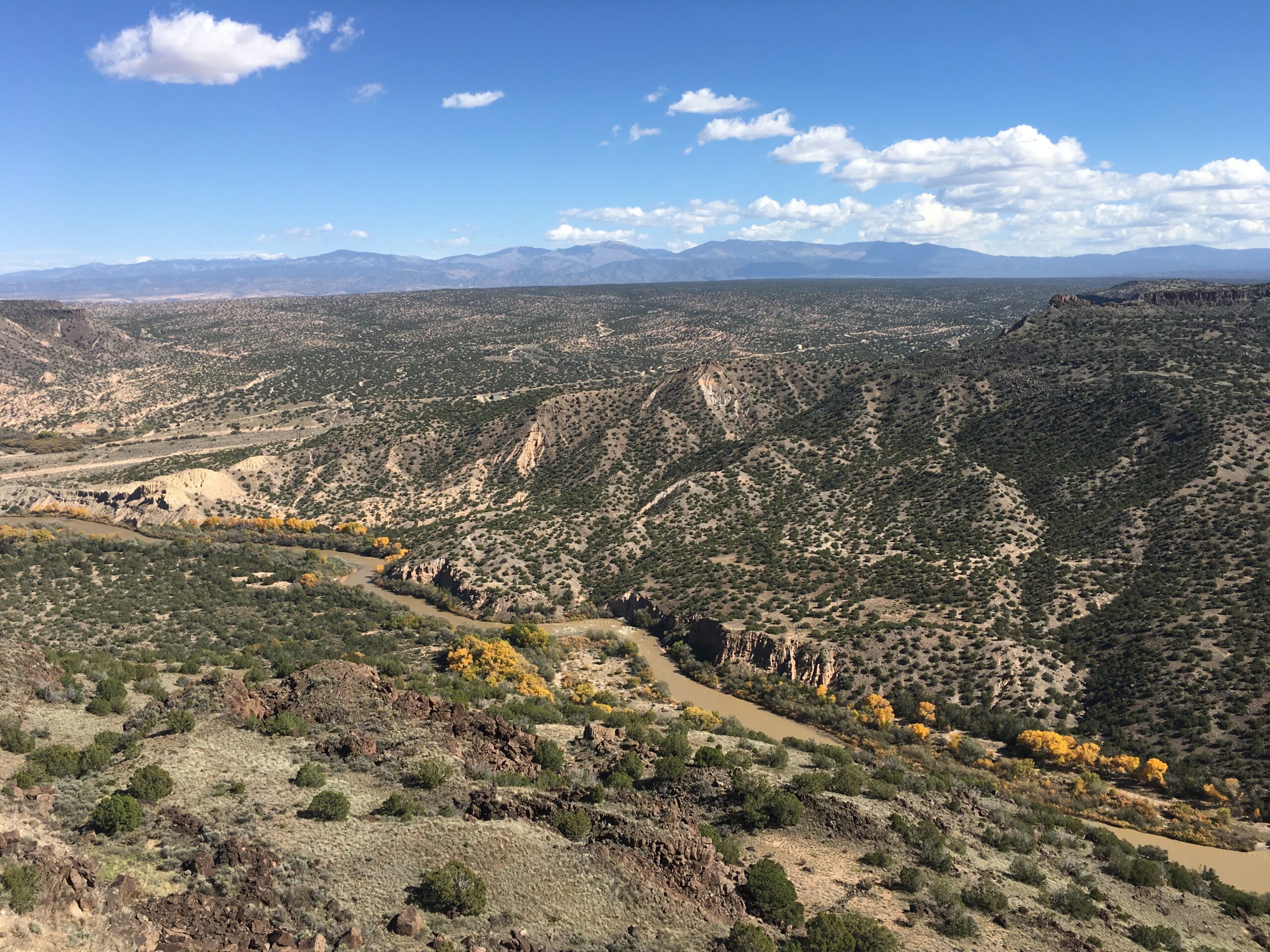Desert land—all stretching skies and scorching earth—is often viewed as being as void of potential as it is of vegetation. Dry landscapes are perceived as vacant, and hence unproductive.

People—and policymakers—tend to associate greenery with product value. As a consequence, when that greenery is absent from a landscape, as it is in deserts, they have a hard time relating high use value to it.
And while these uninhabited landscapes may seem to be uncontaminated by the pollution that tends to accompany high population density, the understanding of desert landscapes as “deserted” results in an unexpected vulnerability rather than in a form of environmental protection.
This vulnerability has been termed “wastelanding“—the process of deeming land, and the people who live there, as lesser, and justifiably exploitable. When an area is wastelanded, its metaphorical emptiness is literally converted into waste sites.
The state of New Mexico is one of these spectacular desert landscapes. Its long highways fold into the horizon, traveled by cars whose license plates read “Land of Enchantment,” the official state nickname—a reference to its beauty and rich cultural history.
However, neither its history nor its beauty has translated into sufficient fiscal resources for its people, and New Mexico has a long history of wastelanding hidden under the guise of technological development.
An Example from the Wild West: New Mexico
 New Mexico wore the title of the “Sunshine State” up until 1941, when “Land of Enchantment” was adopted—it earned this title because it enjoys 310 days of sunshine a year. As of 2019, there were 2.97 million people enjoying this beautiful area, making New Mexico the 6th least populated state in the nation. In fact, in New Mexico’s population density works out to just one person every 17.2 miles!
New Mexico wore the title of the “Sunshine State” up until 1941, when “Land of Enchantment” was adopted—it earned this title because it enjoys 310 days of sunshine a year. As of 2019, there were 2.97 million people enjoying this beautiful area, making New Mexico the 6th least populated state in the nation. In fact, in New Mexico’s population density works out to just one person every 17.2 miles!
Fully 46.4% of New Mexico’s residents are Hispanic, making it a majority minority state. However, accompanying these environmental and social demographics is a poverty rate that outranks all other states in the US, with a jaw dropping 19.5% of the population living at or below the poverty line in 2018.
Bare of Population and Ecological Value?
The unique natural and social composition of the state is not lost on those who visit. And in the late 1930s, the same attributes that now attract wealthy retirees made the state a perfect spot for the development and testing of atomic weapons.
Los Alamos, located in northern New Mexico, was attractive for the development of the Manhattan Project because it was apparently bare, both in terms of population—which were the Wanapum, a tribe of Indigenous people who were displaced in order to build Los Alamos and the Manhattan Project—and in terms of ecological value.
Besides the Los Alamos National Laboratory (LANL), the Trinity site, Sandia National Laboratories, and a series of other monuments instrumental to the development of nuclear technologies, New Mexico is home to the Waste Isolation Power Plant (WIPP). Founded in 1999, WIPP is currently the only deep geologic radioactive waste sight in the nation, and it actively stores nuclear waste from facilities that provide energy to other states. This facility poses a potentially serious threat to New Mexico communities and to the environment surrounding the waste site.
Who Benefits and Who Loses from Wastelanding?
Facilities like these are purposely sited in New Mexico because the landscape is viewed as less viable, and the people as well as the land end up bearing the burden of environmental degradation while other states benefit.
The history of nuclear technologies in New Mexico is turbulent, and the relatively wealthy Los Alamos area continues to stand in stark contrast to the rest of the state in terms of fiscal resources and ecological health. To emphasize this disparity, the percentage of New Mexicans who live below the poverty level is higher than the proportion of millionaires in Los Alamos. Additionally, Los Alamos has one of the highest rates of PhDs per capita of anywhere in the US, while New Mexico as a state has the lowest high school graduation rates of anywhere in the US.
While the environmental composition of New Mexico seems ideal for projects that are waste intensive, these projects are likely to benefit only select portions of the communities, causing broad scale environmental and social harm. Continuing to perpetuate these false impressions about deserts is damaging to the people and areas that are defined by wastelanding.
Don’t Criticize What You Think Can’t Photosynthesize
It’s just not the case that desert lands have snuck under the radar and somehow escaped environmental contamination. Instead, polluting industries are able to sneak under the radar and pollute these landscapes with very little pushback.
Both people and policymakers commonly mistake New Mexico’s rolling plains, cactus rich plateaus, and wide horizons for unproductive land. This misconception is potentially fatal to these ecosystems and the devastated communities that depend on them for their livelihoods.
In order to continue to protect New Mexico’s landscapes and responsibly allocate its natural resources, we must break the illusion that the Land of Enchantment is vacant.

